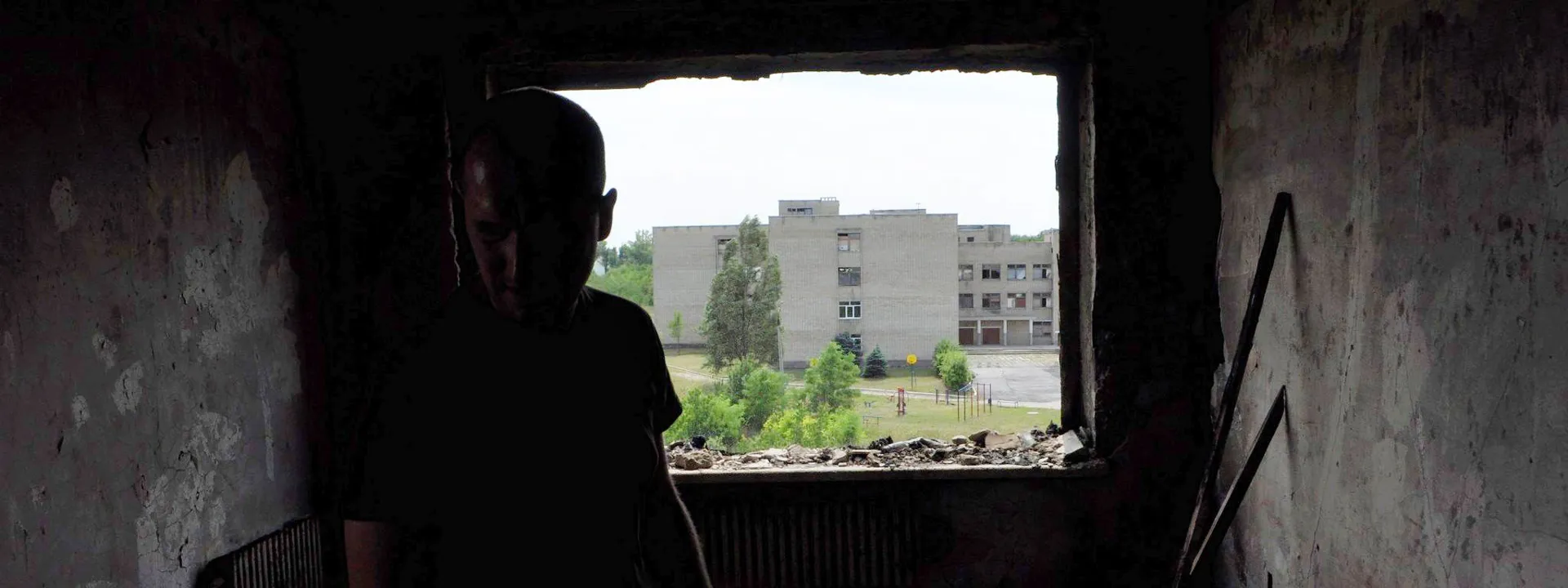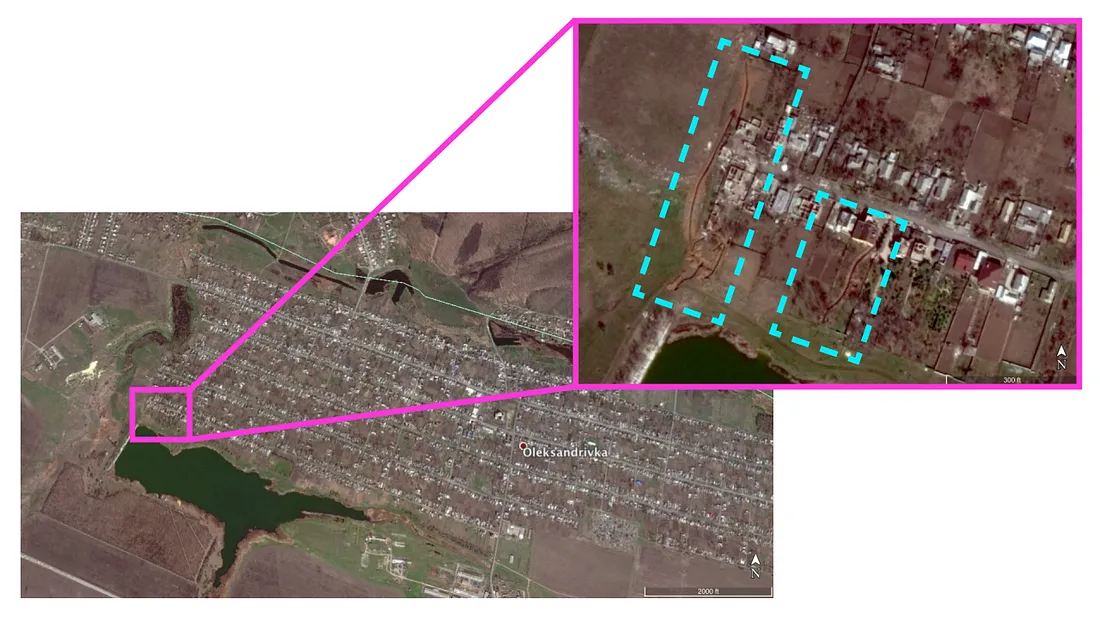Krasnohorivka in the Crosshairs
Casualties and the use of banned weapons in the latest violence in eastern Ukraine
Krasnohorivka in the Crosshairs
Share this story

BANNER: Damage to an apartment building in Krasnohorivka (Source: Facebook).
On June 20 around 04:00 (GMT+3), heavy shelling in government-controlled Krasnohorivka, Donetsk Oblast, hit Ukrainian Armed Forces (UAF) positions, leaving at least three killed, seven wounded, and one captured.
(1/2) ATO spox: Today, at 4 am Russian proxies opened fire with mortars, 122-mm artillery, tanks and Grad-P rocket launcher at Krasnohorivka
— UCMC (@uacrisis) July 20, 2017
(2/2) According to preliminary information, 4 UA troops KIA, 2 WIA. 1 UA soldier was KIA near Novhorodske
— UCMC (@uacrisis) July 20, 2017
ATO spokesperson: Militants opened fire against residential areas of Krasnohorivka. 1 house was damaged pic.twitter.com/ZB8a4xjXWl
— UCMC (@uacrisis) July 20, 2017
Colonel Andriy Lysenko, the Ukrainian Ministry of Defense spokesperson on Anti-Terrorist Operations (ATO), announced that Russian-backed separatist forces in the so-called “Donetsk People’s Republic” (DNR) used heavy weapons banned by the Minsk agreements, including various mortars, tanks, and artillery systems, notably the “Grad-P” (“Partizan”), a variation of the 122mm BM-21 “Grad” rocket launcher.
Additionally, on July 20, the Organization for Security and Co-operation in Europe (OSCE) Special Monitoring Mission (SMM) to Ukraine reported that an SMM UAV (an unmanned aerial vehicle; a drone) was “targeted” in the Trudovskyi settlement in the Petrovskyi district in the western part of the city of Donetsk.
In the same time period (July 12–20), the information center of the so-called DNR reported several shelling incidents in the non-government-controlled areas of Staromykhailivka, Oleksandrivka, and the Kirovskyi and Petrovskyi districts in the western part of the city of Donetsk — all areas where separatist positions opposing UAF positions in Krasnohorivka would likely be. Heavy weapons fire has slowly escalated in volume in the area since July 12. The ATO Press Center stated that the UAF returned fire with assorted small arms and grenades, though damage indicates that heavy weapons banned by the Minsk agreements were used by both sides.
Eduard Basurin, the “deputy defense minister” and the “spokesperson” of the so-called DNR, reported that incoming UAF attacks used heavy weapons banned by the Minsk agreements and killed one DNR militant. Recently, the “Donetsk City Administration” provided shelling damage reports that included the damage done to the aforementioned residential areas from July 12 to July 20.
According to various reports, damage from the shelling included the following:
- One residential building (Zelenyi Hai St, 103) was damaged in the Petrovskyi district of Donetsk City on July 12.
- A residential building (Shkolnaya St, 8) was damaged in Oleksandrivka on the night of July 13.
- At least eight residential buildings (including Lotchykiv St, 24; Marka Ozernoho St, 31; Marka Ozernoho St, 34A) were damaged in the Trudovskyi settlement on July 14 and 15; the OSCE SMM reported five fresh impact sites (Dzhaliya St, 11; Maksymelianivska St 44; Maksymelianivska St, playground; Karnavalna St, 36B; Chornohorska St, 24).
- Three residential buildings were damaged in the Trudovskyi settlement (Luhovskoho St, 39; Zelenyi Hai St, 47; Chekhova St, 21/1) and two (Shevchenko St, 25; Shevchenko St, 29) in Oleksandrivka on July 16.
- Seven residential buildings (including Komsomolska St, 31; Amudarinska St, 38; Chekhova St, 11; Chekhova St, 21/2; and two buildings on Petrovskoho St, 299) and a gas pipeline were damaged in the Trudovskyi settlement on the evening of July 16-17.
- One civilian was killed (Komsomolska St, 31), and at least three were injured (Dnipropetrovska St, 32; Dnipropetrovska St, 16; Dalekoskhidna St, 7); two residential buildings were damaged (Zhukovsky St, 1; Zhukovsky St, 2); and a school was damaged in Staromykhailivka, Donetsk Oblast, on the night of July 17-18.
- One civilian was injured in Oleksandrivka on the evening of July 18.
- One civilian was injured and two residential buildings were damaged on the morning of July 19.
- Two civilians were injured and three residential buildings damaged in the Trudovskyi settlement on the evening of July 19.
- At least six residential buildings were damaged during the July 20 incident in Krasnohorivka, with photographs of the damage appearing on social media. A shell caused a fire in a five-story apartment building, but luckily no civilians were injured. A social media group on the government-banned VKontakte reported that the fifth floor of the building was engulfed in flames.
Note: This list is compiled from information from the OSCE SMM, the UAF, and the DNR, and this information is not completely verified. Some addresses were reported by multiple parties. Given the geographical location of the unverified residential impact sites in relation to verified sites, the @DFRLab has assessed them as possible impact sites, and thus we have included them in this report.
By locating reported shelling sites, a few clear clusters appear. It is likely that there are military positions located where there is a high concentration of shelling incidents, as these incidents would likely indicate opposing forces attempting to hit each other, rather than military forces aiming to hit residential sites.



These incidents were in violation of the “Harvest Ceasefire,” which has yet to see success. As @DFRLab previously reported, Krasnohorivka is a hotspot in the conflict in eastern Ukraine, with frequent shelling incidents in its residential areas. As with most shellings of civilian areas along lines of contact, the attacks the area has sustained are typically targeted at opposing military positions that are embedded or near residential areas. This particular week-long tit-for-tat caused an unclear amount of “DNR” casualties, at least eleven UAF casualties, and at least nine civilian casualties.

